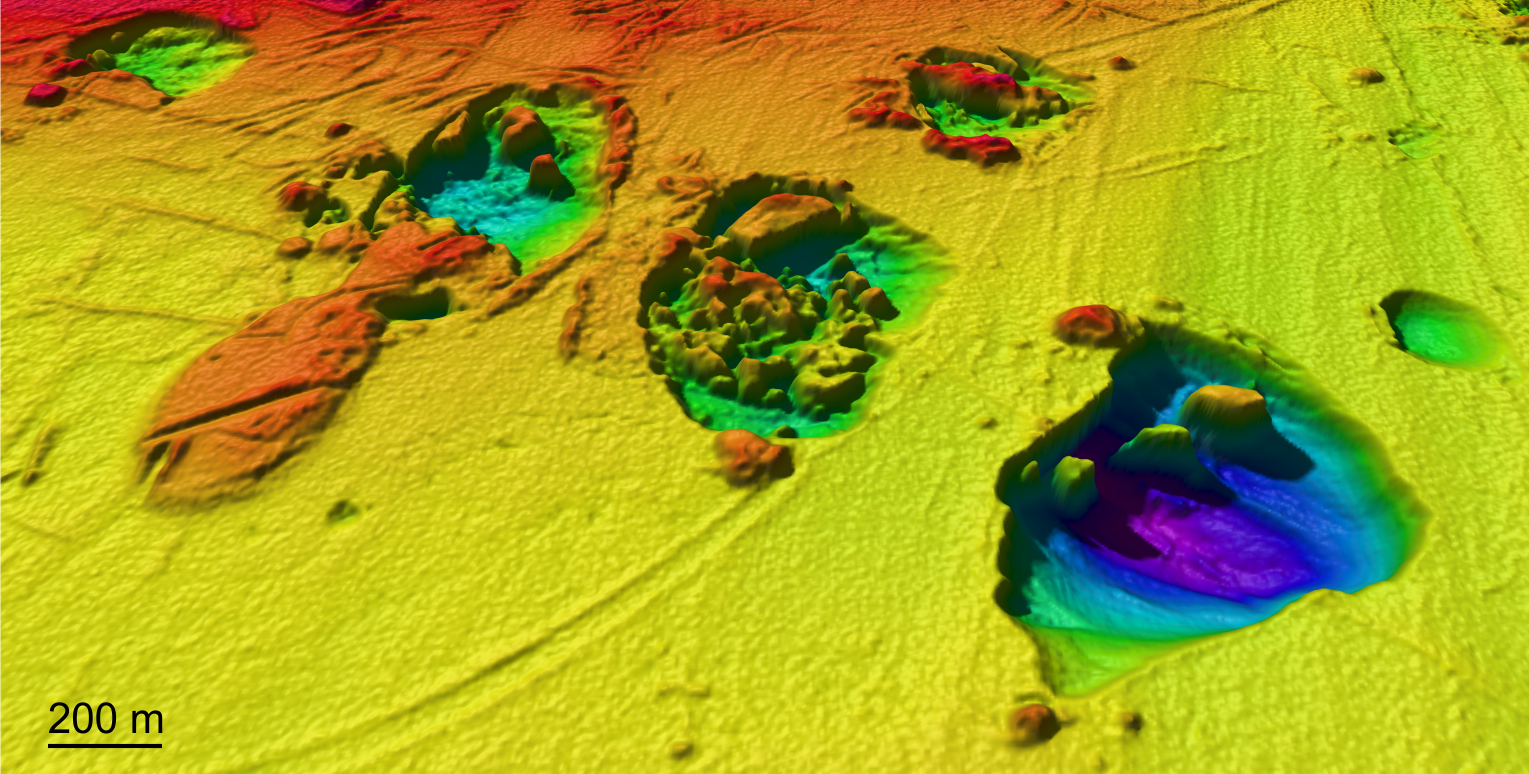Blame Methane Blasts for Sea Craters, But Not for the Bermuda Triangle

There's a saying that any publicity is good publicity. But scientists whose discoveries inspire misleading headlines would probably beg to differ — like the researchers whose recent description of deep-sea craters was hailed by many news outlets as an explanation for mysterious disappearances in the Bermuda Triangle.
The scientists suspected that the craters were caused by methane explosions on the ocean floor that occurred after the last ice age, about 11,700 years ago.
A number of media outlets took that to mean that similar explosive methane activity in the Bermuda Triangle region of the Atlantic Ocean could be blamed for unexplained disappearances. Since the inexplicable 1945 disappearance of "Flight 19" — five U.S. military aircraft — a number of ships and airplanes containing hundreds of people have been reported missing after passing through or over waters in the Triangle, which is bounded by points in Bermuda, Florida and Puerto Rico. [Photos: Lost in the Bermuda Triangle]
In an abstract published online March 2016 following its submission to the European Geosciences Union (EGU) General Assembly, the scientists detailed a number of craters in the Barents Sea, an area in the Arctic Ocean with a basin shared by Norway and Russia.
The craters are distributed around an area measuring about 39 square miles (100 square kilometers), Karin Andreassen, one of the researchers, said in a statement. The scars on the seafloor were quite large — measuring as much as 0.6 miles (1 km) wide and up to 44 yards (40 meters) deep.
These craters likely were formed by gas "blowouts" from the seabed, when methane in the form of ice thawed as the last ice age waned and the Earth warmed, said Andreassen, a professor of marine geology and geophysics at The Arctic University of Norway.
Fortunately for geoscientists, those blasts would have sent seismic waves through Earth. High-resolution, 3D visualizations of seismic data from the craters obtained in 2015 allowed the researchers to investigate the "fingerprints" left behind by the explosions that shaped the craters, providing a clearer picture of how violent methane blasts could have left their mark in the rocky ocean floor.
Sign up for the Live Science daily newsletter now
Get the world’s most fascinating discoveries delivered straight to your inbox.
But "blowouts" of the type that shaped the craters were particular to that period in Earth's history; they were triggered by geologic processes that followed roughly 100,000 years when much of Earth was covered by ice sheets.
"Conditions during the last ice age cannot be compared with what we see today," Andreassen said. "We are not making any links to the Bermuda Triangle."
Follow Mindy Weisberger on Twitterand Google+. Follow us @livescience, Facebook & Google+. Original article on Live Science.

Mindy Weisberger is an editor at Scholastic and a former Live Science channel editor and senior writer. She has reported on general science, covering climate change, paleontology, biology and space. Mindy studied film at Columbia University; prior to Live Science she produced, wrote and directed media for the American Museum of Natural History in New York City. Her videos about dinosaurs, astrophysics, biodiversity and evolution appear in museums and science centers worldwide, earning awards such as the CINE Golden Eagle and the Communicator Award of Excellence. Her writing has also appeared in Scientific American, The Washington Post and How It Works Magazine. Her book "Rise of the Zombie Bugs: The Surprising Science of Parasitic Mind Control" will be published in spring 2025 by Johns Hopkins University Press.









